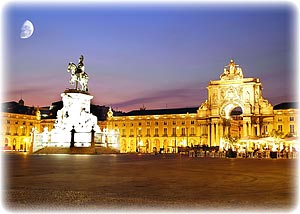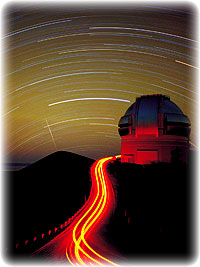Beginners Photography -
Shooting the Night Sky
This section of the site concentrates on beginners photography.

|
This site is dedicated to helping everyone to take better photos, so what makes this section different?
Well, the information here is written with the beginner in mind.
Just like my favourite photography eBooks!
For example, you'll find many 'tooltips' among these pages, giving you, the reader extra information about specific photographic terminology.
The tooltips are underlined with a dotted line. Simply hover your mouse over the word(s) to get some extra information.
Shooting the Night Sky
By
We all catch ourselves staring up into the night sky, and many photographers work to capture the beauty of the heavens with their cameras.

Beginners Photography - Setting
the Scene:
Some people focus strictly on
photographing the moon, or the remarkable
beauty of sunrise and sunset.
Some
people like to capture dramatic moments of extreme weather or “sweet
light” where the sky and objects on the ground attain a radiance or
glow they don’t usually see.
With a little practice, and a little help from the experts, you too can begin to "see" this too.
Beginners Photography - Setting
Your Camera:
Many
other people want to capture just the stars, and there are many simple
methods used to do so successfully.
The basic settings for a camera to capture evening sky effects are ISO 50; f/stop is 2.8 to 3.5.
If
you choose to set the camera at ISO 100 the exposure times can be
shorter. The f/stop settings are to allow the most starlight in as
possible in order to record the many stars, and the smaller the f/stop
or aperture
is set the fewer the stars recorded.
All this sounds very technical, but it's simple really, and easy to understand when it's explained in simple English.
Beginners Photography - Adding
Impact:
An after dark photographer should also realize that the best night sky
photographs have an element of the horizon or a fixed point in the sky
to create a sense of space and motion.
For
example when setting up a
camera it should be level with the horizon, or focus the camera on the
North Star to record the stars “circling” around it.
 Beginners Photography - Star
Trail Effects:
Beginners Photography - Star
Trail Effects:
Before dark it is best to set up the camera on its tripod and make sure
that the camera’s settings are appropriate to the event.
There
will be a wide range of factors that can impact evening
photographic efforts and the biggest one of them all (literally!) is
the Moon.
There's more detail in the eBook, but here's a few tips to get you started:
- When the moon is absent from the sky the exposure time should be set at a minimum of one and a half hours to record star trails and the silhouette of the landscape or horizon.
- For evenings with a sliver of moon the time can be reduced to at least an hour to allow for the foreground details to be captured correctly.
- When the moon is at half full or within a day or two of this point of the moon’s cycle a photographer should allow for thirty minutes to an hour of exposure (a full hour if there are clouds in the night sky).
- In the evenings leading up to the full moon a ten to twenty minute exposure should capture the blue evening sky as well as the star trails.
Beginners Photography - Stars and
Night Skies:
If a photographer is looking to catch the variations of the pinpoint
lights of stars then they will require much faster shutter speeds and
much faster film speeds.
If the landscape is part of the composition the photographer will have to either wait for the full moon, or flash the foreground to capture it.
In
order to avoid the star trail effect a
photographer will need to use the following chart of times for evenings
illuminated by the light of a full moon. With the camera set at f/2.8
and an ISO film of 400:
- 20mm lens at 30 seconds
- 35mm lens at 18 seconds
- 50mm lens at 12
seconds
Relying
on these exposures will allow features from the night sky such
as stars, the Milky Way, or unusual cloud formations to be captured
accordingly.
Finally, if this has whetted your appetite, here's where you can get hold of plenty more tips for your night sky photography.

|
This page was written by my good friend Amy Renfrey. For a steady supply of Amy's tips, have a look at her professionally tailored ebooks and ezines, written especially for beginner photographers. |
More beginners photography articles!
- Beginners Photography - The Basics
- Capturing Moving Water
- Shooting the Night Sky
- Editing Images in Photoshop
- Low Light and Indoor Photography
- How digital cameras work - understanding light and sensors
- Getting More Light on Indoor Photographs
- Learning digital photography
